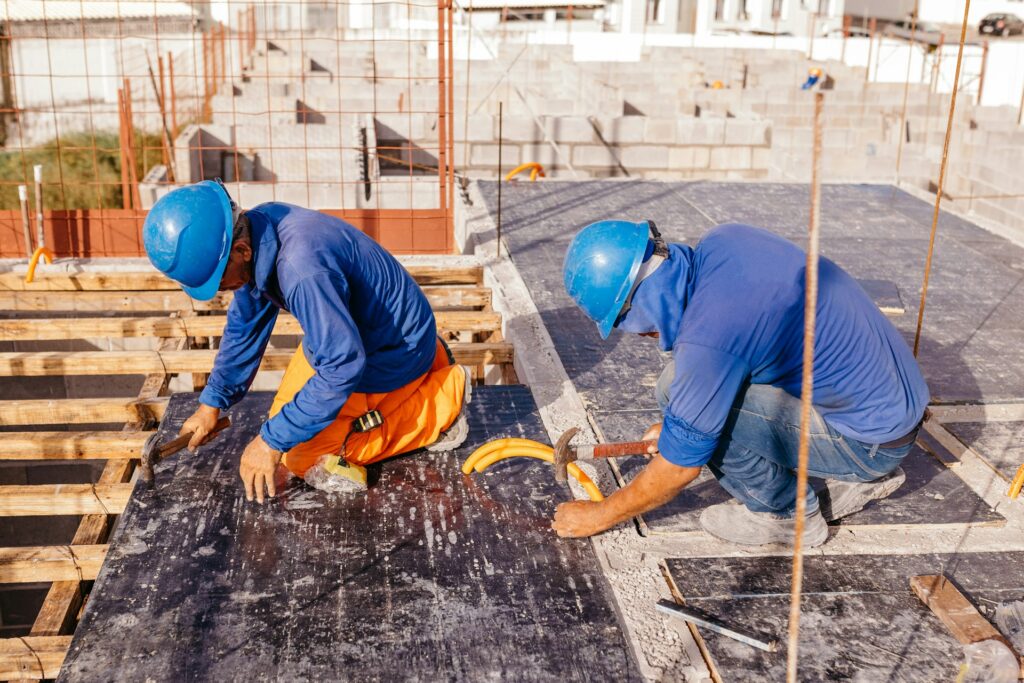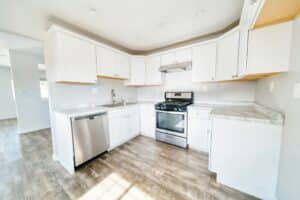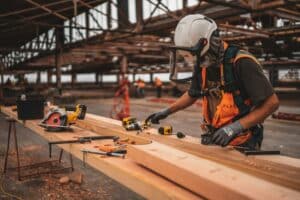Building a solid and reliable structure in Thailand requires careful consideration of the materials used. The tropical climate, with its intense heat and humidity, can challenge the durability of even the most robust materials. This makes choosing the right materials not just a matter of preference but a necessity for ensuring the longevity and safety of any construction project.
Quality materials don’t just stand the test of time against harsh weather conditions; they also play a significant role in maintaining the structural integrity and aesthetic appeal of buildings. While cheaper materials may seem appealing at first, they can lead to costly repairs and safety concerns down the line. Investing in high-quality materials upfront may seem like a big commitment, but it often results in more savings and peace of mind over time.
Choosing the right materials is about more than just cost; it’s about creating buildings that are safe, durable, and attractive. By prioritizing quality in construction projects, we ensure that structures not only endure but also shine in both function and form.
The Importance of Quality Materials in Tropical Climates
In the tropical climate of Thailand, building materials face unique challenges due to high humidity and heat. These conditions can wreak havoc on materials that aren’t suited for such an environment. Humidity, for example, can lead to deterioration and mold in wood and other porous materials. Heat can cause materials like cheap plastics or low-grade metals to warp and weaken over time. This makes it important to select materials that can endure these conditions without losing their integrity.
Durability is the key. When choosing materials, it’s essential to consider how well they withstand the climate. High-quality materials are often designed to resist the effects of moisture, heat, and pests, which are all common in tropical areas. For instance, treated hardwood and engineered wood are excellent choices for outdoor decking or furniture, as they resist rot and termite infestations. Teak and mahogany are also popular for their natural resistance and longevity.
For roofing, materials like terracotta tiles or high-grade metal roofing are ideal because they handle heat and heavy rains well. Concrete is another material that excels under tropical conditions; it’s robust and provides excellent thermal mass, helping to keep interiors cool.
Choosing high-quality materials ensures not only the longevity of a structure but also reduces the need for ongoing maintenance. This is crucial for buildings in Thailand, where climate-related wear and tear can lead to frequent repairs if the wrong materials are used.
Cost vs. Longevity: Investing in High-Quality Materials
When it comes to construction, there’s a significant decision to be made between initial costs and long-term savings. Investing in high-quality materials may seem more expensive upfront, but it pays off in the long run with fewer repairs and replacements.
Let’s break it down:
– Short-Term Costs: Initial investment in high-grade materials might stretch the budget initially. For example, using top-tier roofing materials or high-quality hardwood for flooring can increase upfront costs.
– Long-Term Savings: Over time, quality materials are less likely to need repairs or replacement. Durable roofing materials, like metal or terracotta, have a longer lifespan and require less frequent repairs than cheaper alternatives. Similarly, using quality wood reduces the risk of termites and rot, lowering maintenance costs.
– Common Pitfalls of Low-Quality Materials: Opting for cheaper materials can lead to a host of problems. Poor-quality plumbing may burst or leak, leading to costly water damage. Cheap tiles may crack under high temperatures, requiring frequent replacements.
Investing in good materials can prevent disruption and unexpected expenses over time. Homeowners who prioritize high-quality materials often find that their properties maintain their value and appeal longer, providing them with a better return on investment. While the higher initial cost might seem daunting, the financial benefits and peace of mind they bring make them a smart choice for building in Koh Samui.
Safety and Structural Integrity: Building with Quality
When building in Thailand, using the right materials is crucial for structural safety. The choice of materials can significantly affect a building’s strength and resilience, especially in a tropical climate. Using high-quality concrete, steel, and insulation materials can help ensure that your building withstands the test of time and environmental challenges.
1. Concrete and Steel: High-grade concrete and reinforced steel are vital for constructing strong foundations and frames. These materials provide the necessary support to withstand heavy rains and strong winds typical in tropical regions.
2. Quality Insulation: Good insulation materials help regulate temperature and prevent moisture build-up, which can lead to mold and structural decay. Materials such as foam panels or fiberglass designed for humid climates are excellent options.
3. Thai Safety Standards: Ensure all materials meet Thai safety regulations. This includes fire-resistant materials and those that can endure the region’s weather extremes. Compliance with local safety standards reduces risks and enhances the building’s safety profile.
Investing in these materials reduces the likelihood of structural failures and keeps the building and its occupants safe. Prioritizing quality over cost ensures a solid and lasting structure, free of frequent repairs and maintenance hassles.
Aesthetic Value and Market Appeal of Quality Materials
Using quality materials enhances more than just safety; it boosts the overall look and market appeal of a property. In Thailand, the aesthetic value of a building can significantly impact its market price and desirability. High-quality materials often come with superior finishes and textures, offering a more attractive appearance.
1. Modern Finishes: Materials such as polished wood, stone tiles, and high-grade metals not only look good but also withstand Thailand’s climate. These options provide a sleek and modern aesthetic while maintaining durability.
2. Increased Property Value: Properties with superior materials tend to have higher market values. Buyers are willing to pay more for homes that promise less maintenance and more visual appeal. Using top-quality materials ensures that your property remains attractive for years.
3. Popular Trends: Embracing materials that are both trendy and durable — like bamboo, glass, or treated timber — can keep your property in line with current market demands. These materials offer the right balance between style and sturdiness, making them favorites in Thai construction.
Choosing quality over mediocre options not only ensures that your property lasts but also makes it stand out aesthetically and financially. This strategic choice can lead to better market performance and satisfaction from enhanced living conditions.
Conclusion
Building in Thailand presents unique challenges and opportunities that require careful consideration of safety, material quality, and design aesthetics. Whether it’s ensuring structural integrity with high-grade materials or elevating market appeal through stylish design choices, these factors are crucial in making informed decisions in construction projects. Properly addressing these aspects not only safeguards the investment but also contributes to a prosperous and appealing living environment.
At CJ Samui Builders, we understand the importance of quality and safety in local construction companies. If you’re planning a building project and want expert guidance on choosing the best materials and methods, reach out to us. Let us help you create a safe, beautiful, and lasting structure that stands the test of time in Thailand. Let’s get started with your construction plans today!




